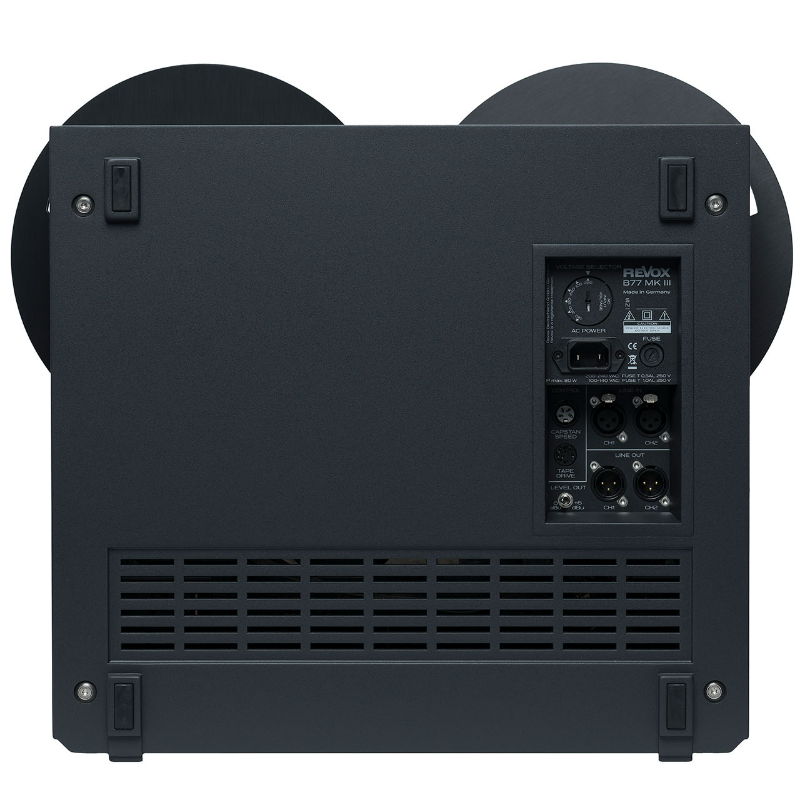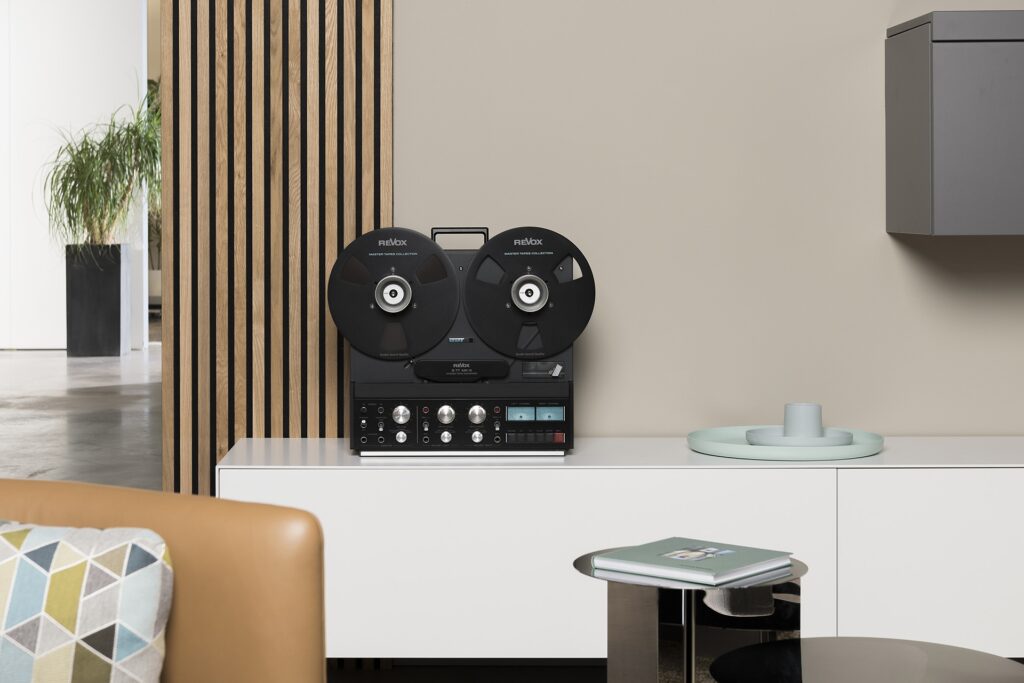Uncategorised
The Reel-to-Reel Revolution: Why Tape is the New Trend in High-End Audio
In the ever-evolving landscape of audiophile equipment, a remarkable transformation is taking place. Whilst vinyl has enjoyed its well-documented renaissance over the past decade, a new movement is emerging among discerning audiophiles – the return to reel-to-reel tape. This isn’t merely nostalgia driving the trend; it’s a calculated pursuit of the ultimate analog experience that many consider the next generation of high-end audio reproduction.

Understanding the Resurgence
The reel-to-reel revival represents something far more significant than a simple retro trend. Modern audiophiles are rediscovering what recording engineers have always known: reel-to-reel tape machines offer an uncompromising approach to analog sound reproduction that stands apart from both digital formats and even vinyl records.
This resurgence is particularly evident in high-end audio circles, where the pursuit of sonic perfection drives equipment choices. Audio enthusiasts aren’t just collecting vintage machines; they’re investing in newly manufactured tape decks like the recently reintroduced Revox B77 MkIII, which combines classic analog warmth with modern reliability and precision.

Why are Reels Captivating Today’s Audiophiles
Unmatched Analog Sound Quality
Reel-to-reel tape captures the warm, organic sound character that digital formats struggle to replicate, no matter how advanced the conversion technology. The tape medium itself acts as a natural analogue filter, preserving the harmonics and spatial information that make recordings come alive in ways that even high-resolution digital files cannot match.
Unlike digital audio, which samples sound at discrete intervals, tape provides a continuous analog representation of the original performance. This continuous nature means that subtle musical nuances – the decay of a piano note, the breath of a vocalist, the natural ambience of a recording space – are preserved with remarkable fidelity.
Superior Dynamic Range
One of the most compelling advantages over vinyl is its exceptional dynamic range capabilities. Whilst vinyl records are constrained by physical limitations – groove spacing, tracking force requirements, and the mechanical nature of stylus tracking – tape offers far greater headroom for both quiet passages and powerful crescendos.
This superior dynamic range allows reel-to-reel systems to reproduce the full emotional impact of musical performances.
Minimal Signal Processing
The direct nature of playback involves significantly less signal manipulation compared to digital formats or even vinyl reproduction. When you play a reel-to-reel tape, you’re hearing a direct magnetic translation of the original recording with minimal electronic intervention between the source and your ears.
This purity of signal path preserves more of the original recording’s integrity and emotional impact. There’s no analog-to-digital conversion, no digital processing algorithms, and no need for the complex equalisation curves required by vinyl reproduction. The result is a more immediate, visceral connection to the music.


The Technical Advantages of Reel-to-Reel
Speed and Consistency
Professional reel-to-reel machines operate at consistent speeds – typically 15 inches per second (IPS) for the highest quality recordings, though 7.5 IPS remains excellent for most material. This consistency, combined with the linear nature of tape transport, eliminates the speed variations and tracking errors that can affect vinyl playback.
The result is pitch-perfect reproduction with none of the subtle wow and flutter that can plague even well-maintained turntables. For audiophiles who demand absolute accuracy in musical reproduction, this consistency is invaluable.
Tape Formulations and Quality
Modern reel-to-reel tapes benefit from decades of magnetic tape development. High-quality tapes like those from ATR Magnetics or Recording the Masters offer exceptional signal-to-noise ratios and frequency response that can exceed the capabilities of vinyl records.
Furthermore, properly stored tapes can maintain their sonic quality for decades, unlike vinyl records which can degrade with each play. A well-maintained tape can sound as good on its thousandth play as it did on its first.

The Cultural and Collectible Appeal
Heritage and Nostalgia
Beyond pure sound quality, there’s also a tangible connection to the golden age of recording studios. These are the very machines on which legendary albums were mixed and mastered – from Abbey Road Studios’ Beatles recordings to the iconic soul sessions at Stax Records.
Owning and operating a reel-to-reel machine connects modern listeners to this rich musical heritage in a way that digital streaming or even vinyl simply cannot match. There’s something profoundly satisfying about threading tape, watching the reels slowly turn, and knowing you’re experiencing music exactly as the recording engineers intended.
Music legends have recognised the Revox B77 MkIII‘s extraordinary heritage by creating exclusive artist editions. Following Yello’s groundbreaking collaboration in early 2024, rock icon Alice Cooper has now released his own limited edition model. These partnerships represent more than simple endorsements – they’re acknowledgements from artists who understand the crucial role these machines played in creating the recordings that defined generations.
The Ritual and Experience
Part of the appeal lies in the ritualistic nature of the listening experience. Threading the tape, setting the proper speed, and watching the mechanical precision of the transport mechanism creates a mindful approach to music listening that contrasts sharply with the instant gratification of digital streaming.
This deliberate, contemplative approach to music consumption aligns perfectly with the audiophile philosophy of dedicated, focused listening. When you commit to playing a reel-to-reel tape, you’re making a conscious decision to engage fully with the music.

Industry Support and Market Growth
Record Label Engagement
The reel-to-reel revival has gained sufficient momentum to attract major record labels and speciality reissue companies. Labels like Revox Master Tapes Collection, The Tape Project, Chad Kassem’s Acoustic Sounds, and even major labels are releasing new music and carefully curated reissues on reel-to-reel tape.
These releases often feature the finest source materials and mastering techniques, creating reel-to-reel tapes that can surpass the sound quality of any other format. The commitment from the recording industry validates reel-to-reel as more than just a niche curiosity.
Equipment Manufacturers’ Response
The market demand has encouraged both established manufacturers and new companies to develop reel-to-reel equipment. The reintroduction of the legendary Revox B77 MkIII exemplifies this trend, offering modern reliability whilst maintaining the sonic characteristics that made the original a studio standard.

The Future of Reel-to-Reel
Growing Community
The reel-to-reel community continues to expand, supported by online forums, speciality dealers, and local listening groups. This community shares knowledge about machine maintenance, tape sources, and recording techniques, ensuring that the format’s knowledge base continues to grow.
Social media platforms have played a crucial role in connecting enthusiasts worldwide, creating a global community that shares discoveries, techniques, and pure enthusiasm for the format.
Educational Value
Many newcomers find that the format provides an education in audio fundamentals that digital formats cannot offer. Understanding tape bias, recording levels, and the mechanical aspects of analog recording provides insights into audio engineering that enhance appreciation for all forms of music reproduction.

Making the Transition
Getting Started
For audiophiles considering reel-to-reel, the journey typically begins with understanding the format’s requirements and rewards. Unlike vinyl, which requires relatively minimal setup, reel-to-reel demands more technical knowledge but offers correspondingly greater sonic rewards.
The investment in a quality system – whether vintage or newly manufactured – represents a commitment to the highest levels of analog reproduction. However, for those who make this commitment, the sonic rewards are immediately apparent.
Building a Collection
Starting a reel-to-reel collection requires patience and knowledge, but the results justify the effort. Original master tape copies, when available, offer the closest possible connection to the original recording session. Meanwhile, high-quality commercial releases and carefully curated reissues provide excellent starting points for newcomers.

Conclusion: The Ultimate Analog Experience
The reel-to-reel revolution represents more than just another audio format revival. It embodies the audiophile pursuit of ultimate fidelity, combining technical excellence with emotional engagement in ways that neither digital formats nor vinyl can fully match.
As the format continues to gain momentum, supported by equipment manufacturers, record labels, and a passionate community of enthusiasts, reel-to-reel tape is establishing itself as the pinnacle of analog audio reproduction. For serious audiophiles seeking the most authentic possible connection to their music, reel-to-reel offers an experience that must be heard to be believed.
The renaissance of reel-to-reel isn’t just about looking backward; it’s about recognising that sometimes the oldest technologies, refined over decades of use, still offer the most direct path to musical truth. In an age of increasing digitalisation, listening to reels provides a pure, uncompromised analog experience that connects us directly to the heart of musical performance.


